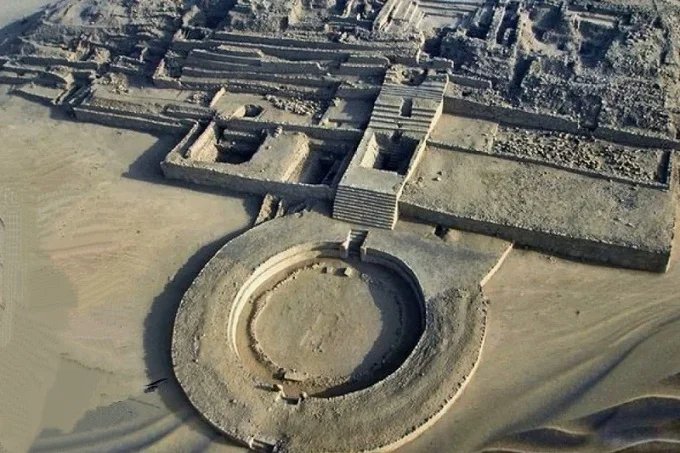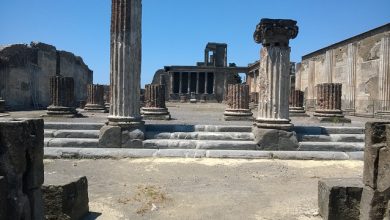Some little-known ancient civilizations

Many people know about the ancient civilizations of the Egyptians, Aztecs, and Incas. However, many other civilizations were not as well known, although they left traces of their existence. Let us tell you about some of them.
1. Mehrgarh (7000 B.C.)
In 1974, the excavations at Mehrgarh (Pakistan) began, but due to the lack of government interest, destruction of the soil, and systematic plundering of the site, Mehrgarh has remained a relatively hidden civilization. In addition, research work was complicated by lingering tribal feuds and poorly protected excavations.
Mehrgarh is considered to be the oldest civilization, and the preserved artifacts speak of a developed society with established relations in trade with different regions. Presumably, Mehrgarh was around 7,000 BC.
Mehrgarh’s population was roughly somewhere around 25,000, and evidence of life there is still being discovered. Many of the remains are buried deep in the earth, and the remains are found to include a number of safely surviving earthen brick structures and a cemetery.
2. Vinca Civilization (5000 – 3500 B.C.)
The Vinca Civilization (also called the Danube Valley Civilization) is noted for having one of the first written systems in the world, with some seven hundred signs. Most of them were found in ceramics. The Vinča civilization is also considered one of the most complex Neolithic cultures known, with its advanced farming system.
The banks of the Danube preserved some evidence of the existence of this civilization, presumably much earlier than the civilizations of Mesopotamia and Egypt.
In 1,908, early archaeological evidence of this civilization was found on a hill near Belgrade. Presumably, the settlements had been active for more than 1,000 years, after which they were abandoned. Each settlement included several thousand people.
The houses of the settlers were built of smeared clay. They were engaged in livestock breeding and growing crops. They even had a semblance of a plow for crops. In addition, evidence of copper utensils was found. By the way, it took almost 1,000 years for copper utensils to be used in Europe.
It is not clear why the Vinca civilization ceased to exist. The only thing that is clear is that the knowledge and innovations of the people of this civilization, probably, faded into oblivion together with the disappeared civilization.
3. Konar Sandal (4500 – 3000 BC)
Konar Sandal is located at Jiroft (a city in the south of Iran). The ziggurat (terraced temple complex), one of the largest and oldest of its kind in the whole world, was discovered in 2002. To date, 2 mounds have been explored in Konar Sandal. Among the discoveries is a large 2-storeyed structure with very strong walls. This means that these walls probably served as a type of fortification.
The discovered ziggurat shows a civilization that is based on rituals and faith. The ziggurat is believed to date from about 2200 B.C. and may have been built by Aratta (a Bronze Age kingdom described in Sumerian texts, but its location has not been found). The site was described by the excavation supervisor as “an independent Bronze Age civilization with its own architecture and language.”
The site was looted and excavated without proper permits. History is silent as to how much treasure was lost. Nevertheless, it is said that the civilization may provide evidence of the oldest written language in the world.
4. Norte Chico Civilization (3500 – 1800 B.C.)
The Norte Chico civilization is one of the most enigmatic. To this day, little is known about this pre-Columbian society in Peru, which may be the oldest known civilization in the Americas.
Evidence of huge structures, including pyramids, and traces of elaborate irrigation systems have been found, but there is little evidence of the daily way of life of the people. To date, six pyramids have been discovered. These pyramids were not as elaborate compared to the later Inca architecture, but they were still quite elaborate structures.
The villages of Norte Chico were located north of present-day Lima. The distinctive feature of the Norte Chico is the fact that it belonged to those rare civilizations that did not know how to make pottery, because no such artifacts have been found in their settlements. Allegedly, they used gourds instead, which had limited use in cooking.
To this day their artifacts have been found in countless pieces of art and jewelry, but there seems to have been some belief in deities, except that it is not known in what form their belief existed.
The villages were supposedly abandoned in 1800 B.C., but it is not entirely clear for what reason. There is no evidence that they took part in any hostilities or conflicts, nor is there evidence that they underwent any natural disaster. Their villages were located near the 3 main rivers, so it is possible that a prolonged drought forced them to migrate to a new territory, although this has not been proven.




